A Visit to the Interactive Institute: Notes on Sweden’s Approach to Art and Exhibitions, by Eduardo Navas
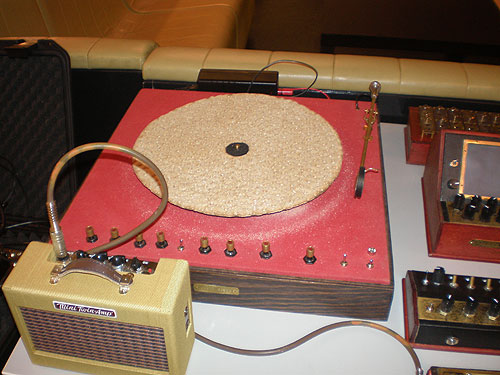
Image: ‘Crisp Bread Turntable’ by Yoshi Akai. Video available below.
As part of my residency at the Swedish Traveling Exhibitions, on October 29 I visited the Interactive Institute, quite a unique research center located in the city of Stockholm. Its model is unlike any other I have encountered. While the institute has close ties to the arts and the tradition of exhibitions as forms of communication and education, it also focuses on the development of projects that crossover to the commercial sector. There are actually a few spin-off companies that were started as research collaborations in the Interactive Institute. But to do justice to their mission, it is best that I quote how they present themselves publicly, from their about page:
The Interactive Institute is a Swedish experimental IT-research institute that combines expertise in art, design and technology to conduct world leading applied research and innovation. We develop new research areas, art concepts, products and services, and provide strategic advice to corporations, the cultural sector and public organisations. Our research results are communicated and exhibited worldwide and brought out to society through commissioned work, license agreements and spin-off companies.
I cite them directly because I find this type of research model to be an increasingly common hybrid: rigorous academic research meets commercial interests. Yet, the Interactive Institute, seems unique because its creative drive appears to be well balanced, given that it is in the middle of a major corporate technology research sector in Stockholm, located in the neighborhood of Kista. One thing that became certain is that their model is directly informed in part by the always changing aesthetics of networked communication. In their case, this tendency is found in the concept of “Interactivity;” such premise is part of their name.
What follows are notes on the projects that Halina Gottlieb, the Studio Director, and the researchers who work with her shared with me. I focus on five projects. More can be found on their website.

Image source: Interactive Institute
The first project, The Interactive Salon, is quite a major endeavor that encompasses several collaborations. Halina Gottlieb explained the concept behind the Interactive Salon, which is a traveling exhibition of a series of creative forums and collaborations that explore the possibilities of emerging technology in museums and heritage sites. This project appears to have a focus on education, and how museums need to be proactive in proper adaptation of interactive interfaces as part of their curatorial approach. One thing that came to mind as I read through a catalog that Gottlieb provided was how the concept of interactivity as proposed by the Interactive Salon, can be challenging for some museums. Especially art museums, that may find the need to reconsider how people approach art in a time of pro-activity. Another project that is quite ambitious is Know How Books, which is a series of publications that catalog the way emerging technology is implemented in exhibitions in support of cultural heritage. A term used apparently to refer to the historical-cultural conscience of Sweden.
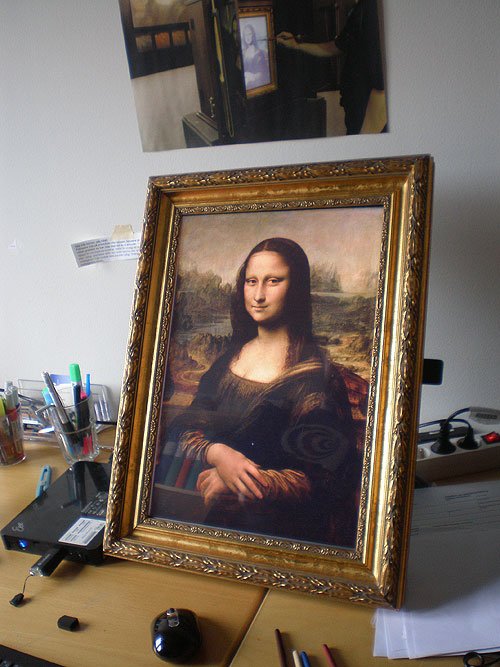
This brings me to the first project that I experienced during my visit. It is not directly part of the Salon or the Now How Books, but it is definitely informed by both projects’ mission. Old Master Paint Brushes is an interactive installation that can be used to show case any well-known painting. In the example I share, the portrait of the Mona Lisa, by Leonardo Da Vinci is displayed. It was commissioned by the Science Centre of Singapore, for a Leonardo Da Vinci Exhibit, which took place in May of 2009.
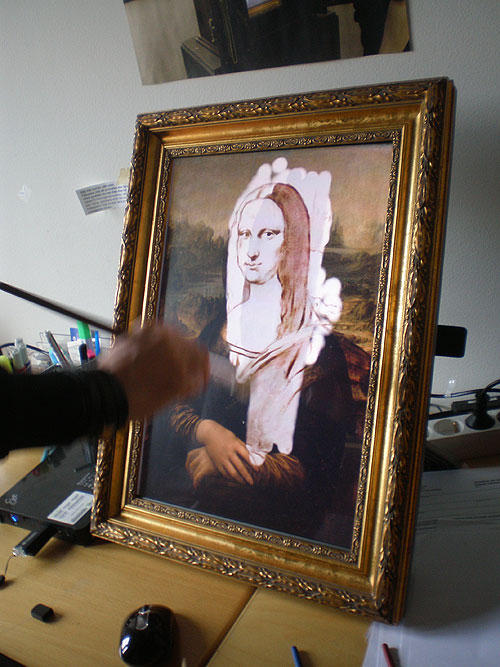
The premise behind this interactive display is to allow the visitor to uncover multiple layers within the painting, from the basic sketch to more finished definitions preceding the finished glazes. The image is admittedly bigger than the actual Mona Lisa. I was told that the painting’s dimensions were requested specifically by the Science Centre of Singapore.
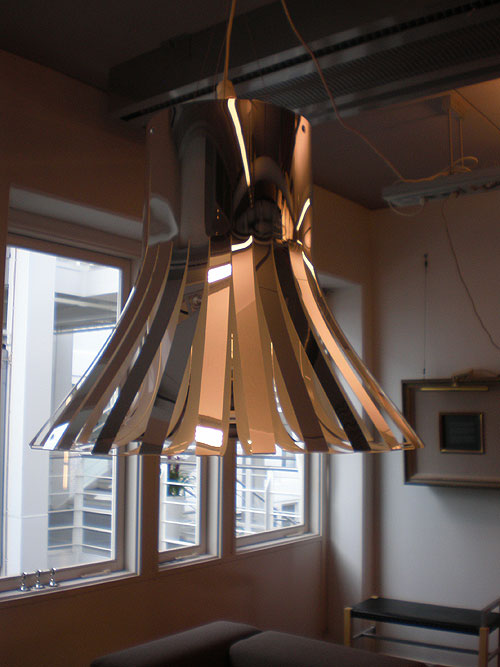
Next I was shown Flower Lamp, which is part of a set of projects under the concept of Visual Voltage. The lamp reacts to the amount of energy being consumed in a home. When its metallic petals open, it means that less energy is consumed; the opposite takes place when they close.
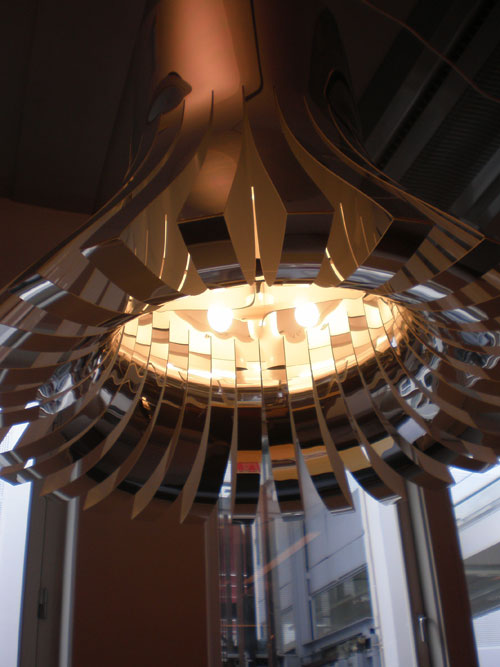
Close up of Flower Lamp
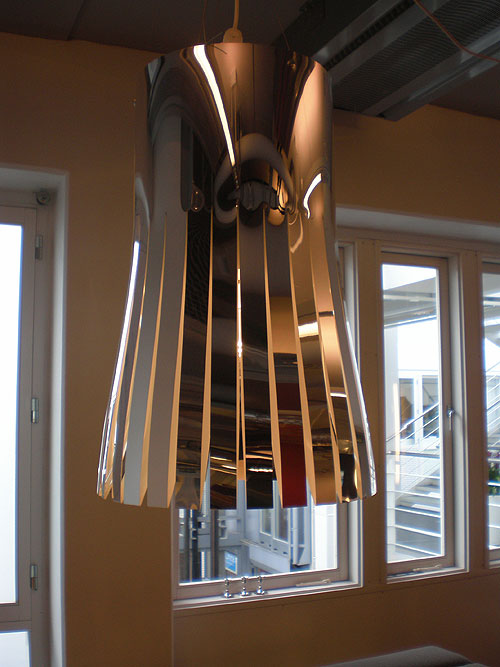
Interestingly enough, while I was being shown the lamp, its petals closed. I immediately wondered what may have triggered the change, but I obviously could not know as I was not familiar with the many areas of the Interactive Institute.
Admittedly, given my emphasis on Remix, I am a fan of sound projects, so my bias is evident here as I share three videos of Yoshi Akai‘s work, a resident researcher from Japan; who, during his current year at the Interactive Institute, developed an impressive set of sound projects. He explained to me that his interest is in creating works that anyone can play. One need not be a musician, he said, to play these instruments.
Crisp Bread Turntable is literally a cultural mashup of a generic turntable and crisp bread; the latter is a traditional food in Sweden. The user can place the needle on the bread, similarly to any vinyl turntable, and can adjust the sound by manipulating a set of controls on the front of the device.
Another project by Akai is Lego Sequencer MR II. The principle here is to place Legos on the board. The sound is sensitive to the color as well as height of each placed set. While this project is quite playful, there is a bit of complexity to it. A diagram of the sound each color emits accompanies the Lego device.
And White Magic, also by Akai, consists of a pair of white gloves that produce sound according to their distance from each other, as well as the light on top.
While these projects are designed to be inviting, it becomes evident upon Akai’s demonstrations that it does take some skill to perform with them. The devices are symptomatic of interactive aesthetics commonly found in gaming culture. Play to learn seems to be the message.








